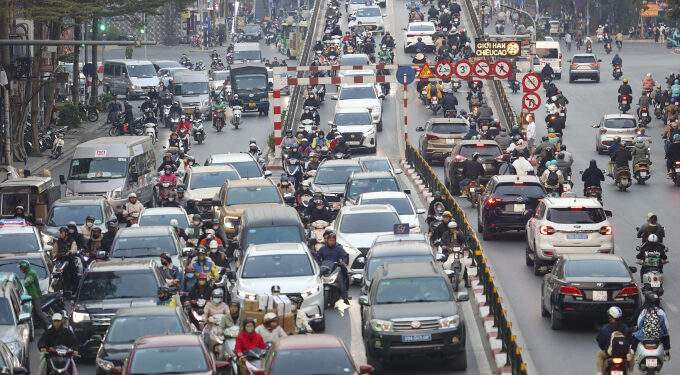Having spent years commuting by both motorbike and car in the city, I have come to realize one clear truth: motorbikes, the most common means of transport in Vietnam, are also the most dangerous. Their risk lies not only in their small, exposed design but also in people’s habits, mindset, and a traffic infrastructure ill-suited to protecting riders.
In developed countries, cars are the preferred mode of transport, not simply because people are wealthier, but because cars are inherently safer. Inside a car, drivers and passengers are protected by a sturdy metal frame, airbags, seat belts, anti-lock braking systems, collision sensors, reverse cameras, and blind spot warnings. In contrast, motorbike riders are completely exposed to chaotic traffic. A slight touch or sudden swerve can easily lead to a fall, resulting in serious injury or even death.
Most road accidents in Vietnam involve motorbikes I have personally noticed. It happens daily: a slight wobble, a hard brake, or a pedestrian crossing without looking can result in disaster. Car accidents do occur, but the likelihood of fatal outcomes is significantly lower.
Another reason motorbikes are so dangerous is their sheer density. In major cities like Hanoi and HCMC, a family may own two or three bikes. Narrow streets, packed with millions of motorbikes, create chaos. Riders must dodge cars, avoid pedestrians, weave through buses, or even ride on pavements when stuck in traffic. These behaviors stem from the desire for convenience and the habit of “finding shortcuts,” but they constantly place riders in harm’s way.
Equally troubling is the poor traffic awareness among some riders. Improper helmet use, running red lights, riding against traffic, speeding, and using phones while driving are still common. Because motorbikes are small and agile, riders often feel “free,” forgetting that one careless moment can cost a life. Unlike car drivers, who undergo stricter licensing tests and face higher financial responsibility, many motorbike users get their licenses with minimal training, and some even have others take the test for them or ride before reaching the legal age.
There is also a psychological aspect. Car drivers tend to be more cautious, as even a minor collision can result in expensive repairs. Motorbike riders, however, often downplay small scrapes and become aggressive or reckless just to save a few minutes. This overconfidence makes motorbike accidents sudden and often unavoidable.
Vietnam’s infrastructure further compounds the risk. Many roads lack designated lanes for motorbikes, have faded lane markings, inconsistent speed bumps, and poorly placed traffic lights. Rain makes roads slippery, while manhole covers and potholes, barely noticeable to cars, can easily throw a motorbike rider to the ground.
I have witnessed heartbreaking accidents caused by the smallest mistakes: a mother and child falling after slipping through a puddle, a young man crashing into a divider while trying to avoid a suddenly opened car door. Cars, at least, offer some protection. On a motorbike, every mistake takes a direct toll on the rider’s body.
Of course, motorbikes remain essential in Vietnamese life, especially in narrow alleys, rural areas, or places with underdeveloped infrastructure. But as cities aim for more civilized transportation systems, our mindset must change. Instead of relying on motorbikes as the primary mode of travel, we should embrace public transport, small cars, e-bikes, or bicycles, safer and more sustainable options. Authorities must also take stronger measures: designate lanes for motorbikes, strictly enforce traffic rules, and educate road safety from an early age. Riders must understand they are controlling a high-risk vehicle, not simply “getting around conveniently.”
Whenever I sit in my car and look through the window at hundreds of motorbikes crowding under the rain, surrounded by exhaust and blaring horns, I cannot help but think: just one wrong move, one sudden brake, and tragedy could strike.
Motorbikes have been part of Vietnamese life for decades, but they are a double-edged sword we must reassess. Traffic safety is not only the government’s duty; it is a personal choice. We can choose to slow down, to be more careful, and to use safer vehicles to protect ourselves and our loved ones. After all, what matters most is not how fast or convenient the journey is, but making it home safely every time.
*Readers’ opinions are personal and do not necessarily match VnExpress’ viewpoints.





